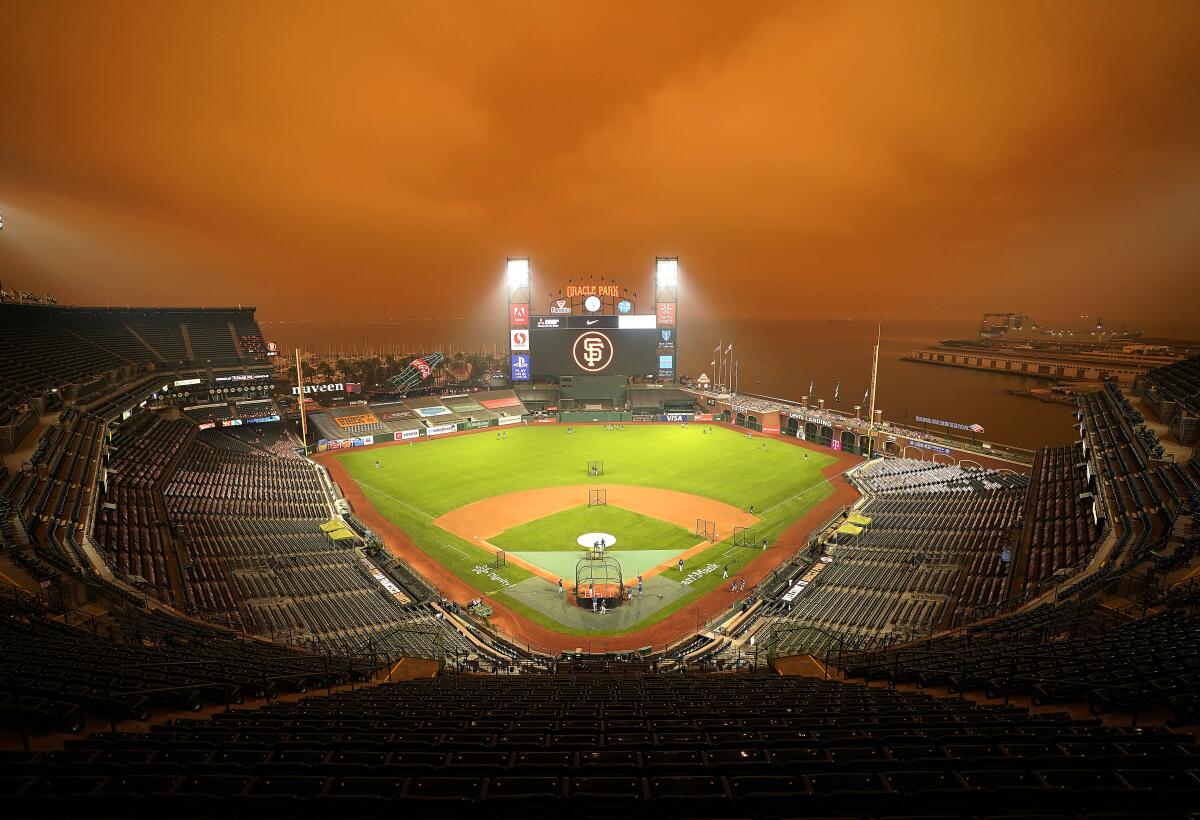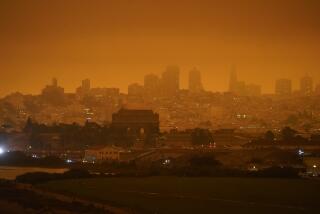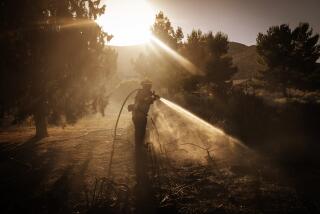Opinion: With the eerie skies of climate change amid a pandemic, we’re in a ‘Twilight Zone’ scenario of our own making

The Bay Area wasn’t in end times Wednesday. It only looked like it, with orange skies creating an eerie, perpetual dusk. Car headlights were still needed at high noon.
But even if this wasn’t Goetterdaemmerung, the National Weather Service was certainly adding to the uncomfortable atmosphere.
“This is beyond the scope of our models so we rely on your reports!” NWS Bay Area tweeted.
And what exactly does that mean? a Twitter user asked.
“The models do not seem to be keeping up with the thick layer of smoke as far as temperature forecast data, visibility, etc.,” the weather service responded. “We just have so much smoke over us right now. Yesterday the models were way off and we expect the same today” for afternoon temperatures.
In other words, the scope of Western wildfires had for the first time outstripped the experts’ ability to predict — much as the COVID-19 pandemic has done. So we’d be forgiven for feeling as though things have gone terribly wrong again. They have, as a result of poor policy going back months in respect to the coronavirus and, in the case of wildfires, many years.
Oddly, despite the smoke and ash from wildfires in Oregon that were turning the streets yellow-orange, the air quality in the Bay Area was good Wednesday morning, and there wasn’t even a whiff of smoky smell — for a while, at least. The smoke had risen far enough into the atmosphere that it was trapped above the famous marine layer that blankets San Francisco so much of the year. But that wouldn’t last, the weather service said, as eventually gravity would exert itself on the ashes.
This began a series of responses from around the area, including reports of ash filtering through the air, accompanied by photos that made it look as though the neighborhoods of the region had been trapped in amber for all eternity. Thursday morning, the streets of San Francisco look less surreal — but in a way more scary as ash filled the air and blanketed streets.
Maybe Wednesday’s “Twilight Zone” scenario was what we needed to make us realize in a visceral way how bad it’s gotten. It’s gone beyond just distant reports of lost structures and multiple deaths — at least eight people have died in the recent Western wildfires so far, and others had to be rescued when they were cut off by flames. The blazes are so big that they can blanket us with ash, hundreds of miles away, and color our daily lives with sepia light.
Climate change scientists have been warning us for years about exactly the scenario we have today: Wildfires in the West probably wouldn’t be more numerous, or caused by anything different — lightning, arson, power lines or heedless people with pyrotechnics at a gender-reveal party. But they would be more catastrophic. There would be monsters among them. Monsters big enough to turn the Bay Area orange while we in Southern California were more of a sickly yellow.
That strange, colored light falls on a world distorted by the illness that surrounds us, a pandemic that limits our activities. Late Wednesday afternoon, my daughter and I went outside to view yet another salmon-colored sun in a yellow-gray sky. The street was empty, as it’s been so often in recent months. People are out only when they need to be.
COVID-19 lockdowns showed us for a while how much lighter our traffic could be, how we could reduce nonessential air travel, and thus reduce air pollution and quit adding to the loads of greenhouse gases that change our climate ever more. We have an economy to get started again, but could we give some thought to how we might do that without a return to spending hours sitting on choked freeways while our cars continue to spew pollutants into the air that we have too often turned yellow — sometimes from smog, sometimes from catastrophic wildfire?
And so, while neither one has anything to do with the other, both catastrophes remind us how small we have made our planet. Our world economy is built on travel that spread the coronavirus and cause a pandemic. And our choice of transportation — fossil-fueled cars and airplanes — has contributed mightily to the climate change that has meant fires so big they can blanket parts of California with red and yellow air, and falling ash, even when they occur at a great distance. And the burning of all that land, in a sad cycle, contributed to the climate change we brought about in the first place.
More to Read
A cure for the common opinion
Get thought-provoking perspectives with our weekly newsletter.
You may occasionally receive promotional content from the Los Angeles Times.











